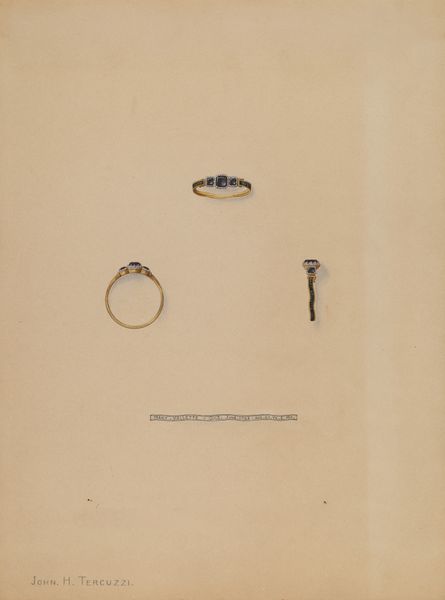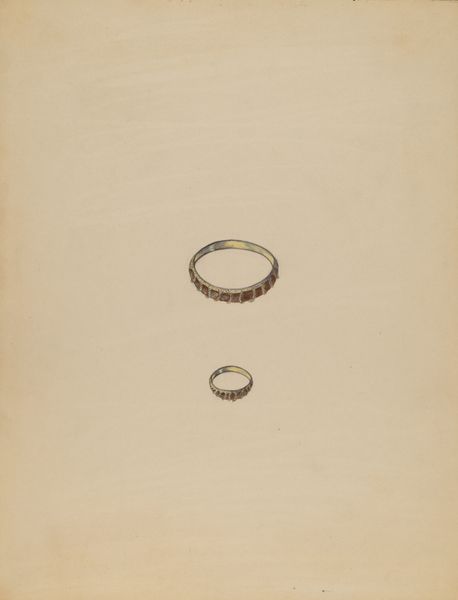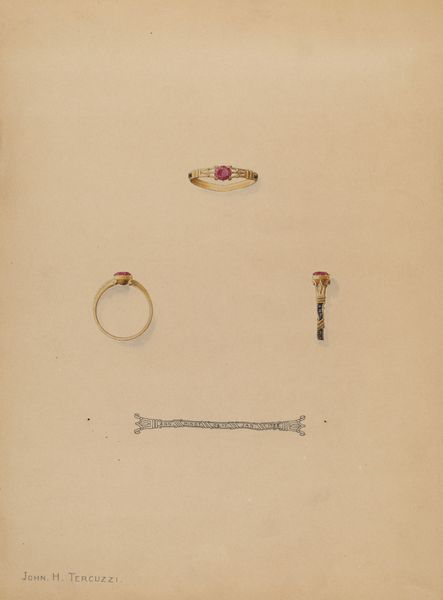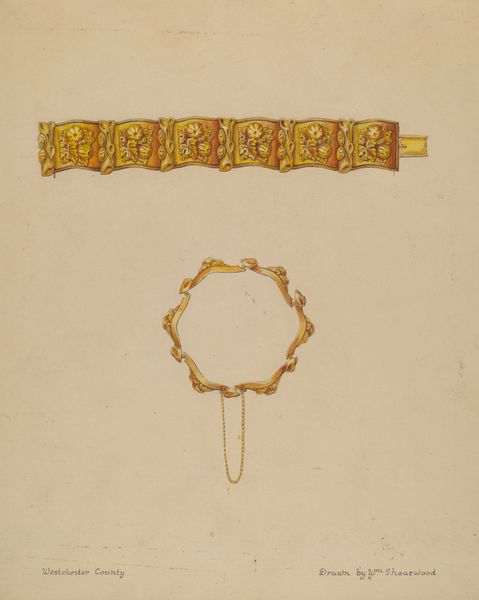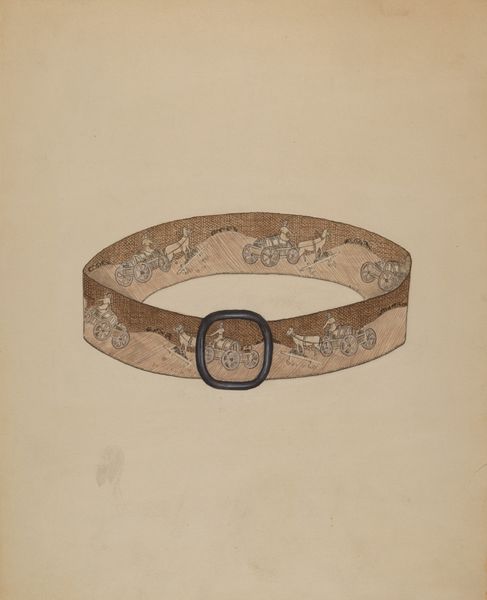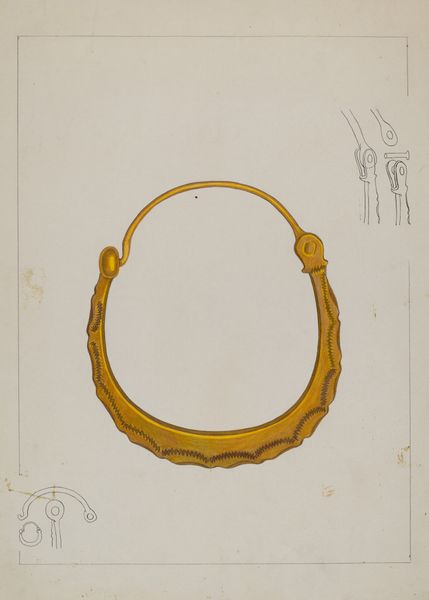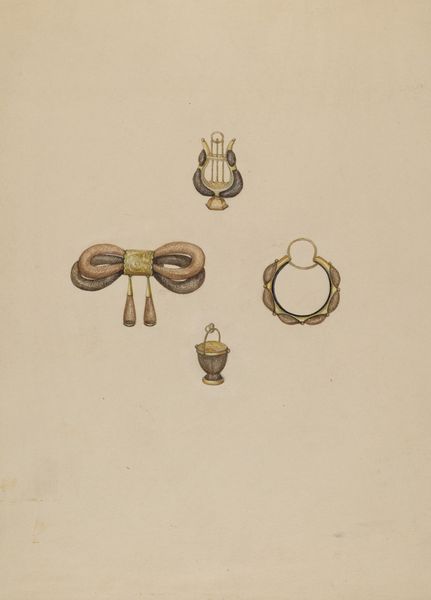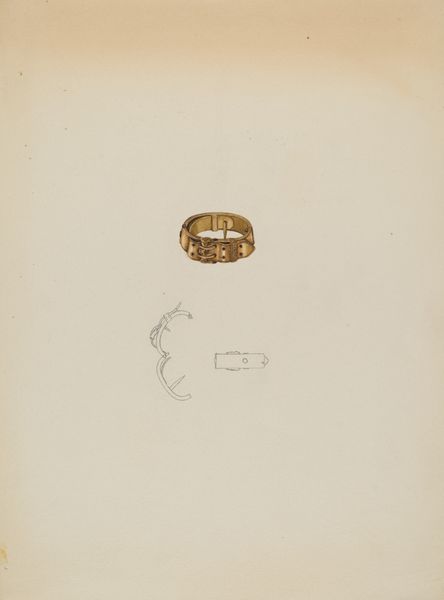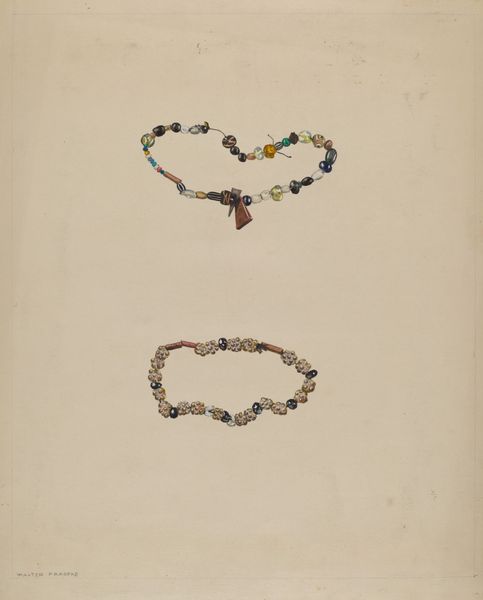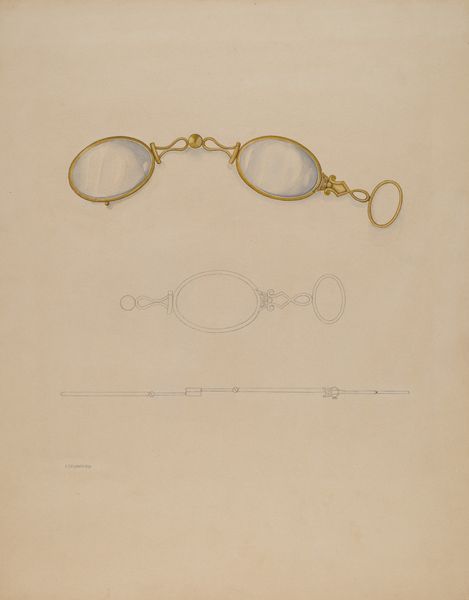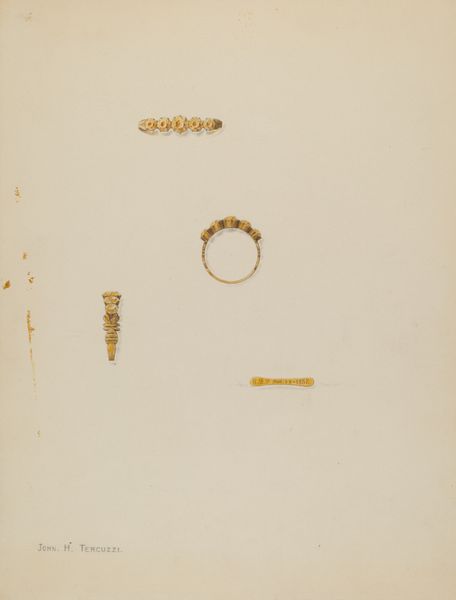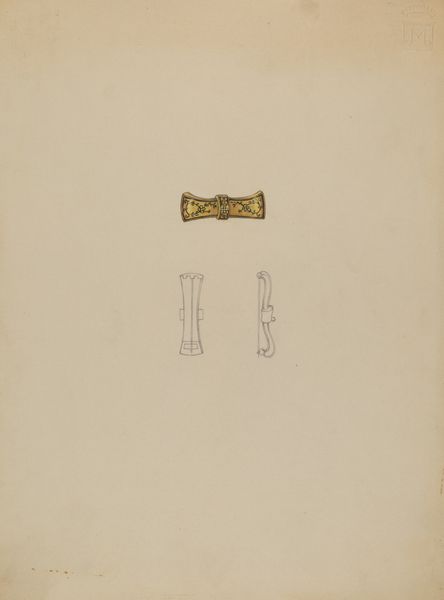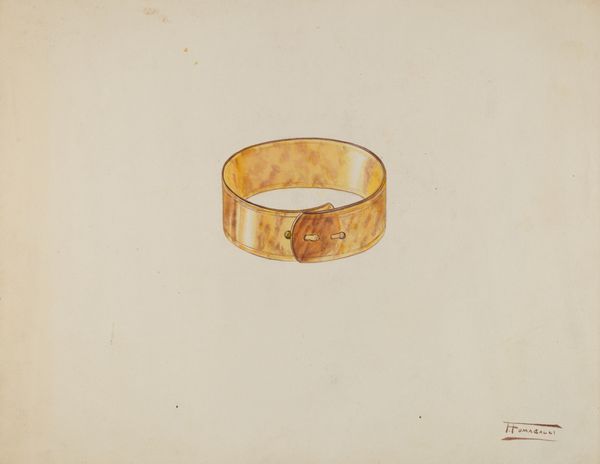
drawing, watercolor
#
drawing
#
watercolor
#
watercolour illustration
#
academic-art
#
decorative-art
#
watercolor
Dimensions: overall: 28.9 x 22.8 cm (11 3/8 x 9 in.)
Copyright: National Gallery of Art: CC0 1.0
Curator: Oh, isn’t that striking? This is "Bracelet" by John H. Tercuzzi, circa 1938, a watercolor and drawing piece. Look at the detail! Editor: Mmm, it’s…restrained. All those golden hues against the stark white ground. There’s a sort of quiet luxury in it. Curator: I think "quiet" is right. To me, there's an academic feel to it. The work showcases jewelry design, of course, but each seems to tell a little story through its structure, doesn't it? The hinged one seems particularly interesting. Editor: Yes, it’s like he is itemizing these examples in watercolor and ink, meticulously recording how light glances on the surfaces, defining shape. You're right—it feels quite formal, almost anthropological. Note how each clasp or connector is depicted? Almost instructional. Curator: Definitely, that academic precision enhances a bit of charm. Like these weren’t just objects but had character. They must have existed, maybe even adorned somebody’s wrist. Can't you imagine the personality behind them? That bulky bangle up top seems playful; then a simple bracelet that closes on one side with a chain hanging down is much more whimsical! Editor: I’m struck by how it anticipates photorealism, this careful depiction. The light source seems clear, the metallic luster quite believable given the medium. One would expect heavier use of shadows, yet, overall, there is such light and space! Curator: He doesn't want you to forget you are still seeing watercolor. So light, like he’s sharing a glimpse, a moment. It's subtle, sure, but also potent somehow, the allure of gold implied through art. Editor: Precisely! As an object of aesthetic contemplation, "Bracelet" uses its pictorial space very efficiently. It reminds us how formal renderings of something ordinary, in turn, imbue it with so much intrigue. Curator: Absolutely! The magic in seeing, perhaps more than having! Editor: Indeed. And for me, a chance to revisit the foundations upon which visual understanding—or at least how we record what we find beautiful in objects—begins.
Comments
No comments
Be the first to comment and join the conversation on the ultimate creative platform.

